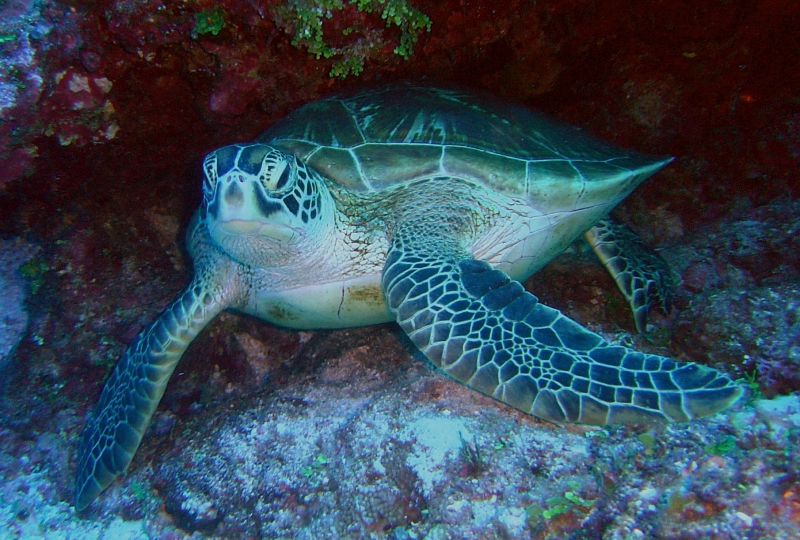From the Open-Publishing Calendar
From the Open-Publishing Newswire
Indybay Feature
Green Sea Turtles Recovering on U.S. Coasts
WASHINGTON, April 5, 2016 — The success of green sea turtles’ recovery on the U.S. Atlantic and Pacific coasts warrants downgrading their status from “endangered” to “threatened,” according to today’s announcement by National Marine Fisheries Service and U.S. Fish and Wildlife Service, in response to a petition from the Association of Hawaiian Civic Clubs. But the agencies emphasized that the growing threat of climate change and sea-level rise — particularly on low-lying nesting beaches in the Northwest Hawaiian Islands — and other threats mean that sea turtles remain threatened and still need the Act's protections.
“The undeniable recovery of most green sea turtle populations creates a hopeful spot in our changing oceans,” said Catherine Kilduff of the Center for Biological Diversity. “Sea turtles capture our imaginations, improbably crossing oceans for most of their lives before loyally coming ashore to build nests on the beach. The knowledge that green sea turtles can overcome illegal harvest, plastic pollution and warming waters testifies to their resilience.”
Today’s final rule resulted from a global review of the green sea turtle’s conservation status that found that the sea turtle should be classified into 11 distinct population segments. Although some sea turtle populations are improving significantly due to the protections of the Endangered Species Act, several populations in other parts of the world, which do not benefit from the protections of the Act, continue to struggle. The Mediterranean, South Pacific and western Pacific populations remain in danger of extinction and will remain listed as “endangered.”
“Sea turtles face a lot of threats, from plastic trash they swallow to sea-level rise to getting caught in fishing gear — even poaching, in some parts of the world,” said Kilduff. “This success story shows that the Endangered Species Act works and is an essential safety net for endangered wildlife.’”
Photo: Green Turtle, Chelonia mydas, Saipan, David Burdick// NOAA.
The Center for Biological Diversity is a national, nonprofit conservation organization with more than 990,000 members and online activists dedicated to the protection of endangered species and wild places.
http://www.biologicaldiversity.org/news/press_releases/2016/green-sea-turtles-04-05-2016.html
Center for Biological Diversity
http://www.biologicaldiversity.org/
Today’s final rule resulted from a global review of the green sea turtle’s conservation status that found that the sea turtle should be classified into 11 distinct population segments. Although some sea turtle populations are improving significantly due to the protections of the Endangered Species Act, several populations in other parts of the world, which do not benefit from the protections of the Act, continue to struggle. The Mediterranean, South Pacific and western Pacific populations remain in danger of extinction and will remain listed as “endangered.”
“Sea turtles face a lot of threats, from plastic trash they swallow to sea-level rise to getting caught in fishing gear — even poaching, in some parts of the world,” said Kilduff. “This success story shows that the Endangered Species Act works and is an essential safety net for endangered wildlife.’”
Photo: Green Turtle, Chelonia mydas, Saipan, David Burdick// NOAA.
The Center for Biological Diversity is a national, nonprofit conservation organization with more than 990,000 members and online activists dedicated to the protection of endangered species and wild places.
http://www.biologicaldiversity.org/news/press_releases/2016/green-sea-turtles-04-05-2016.html
Center for Biological Diversity
http://www.biologicaldiversity.org/

Add Your Comments
We are 100% volunteer and depend on your participation to sustain our efforts!
Get Involved
If you'd like to help with maintaining or developing the website, contact us.
Publish
Publish your stories and upcoming events on Indybay.
Topics
More
Search Indybay's Archives
Advanced Search
►
▼
IMC Network



